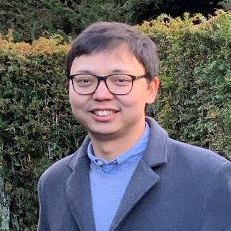Emerging Investigators in Promoting Advanced Membrane Technologies
A special issue of Membranes (ISSN 2077-0375). This special issue belongs to the section "Membrane Applications".
Deadline for manuscript submissions: closed (30 September 2021) | Viewed by 2635
Special Issue Editor
Interests: materials chemistry; separation engineering; reaction engineering; process engineering; porous materials; membrane technology
Special Issues, Collections and Topics in MDPI journals
Special Issue Information
Dear Colleagues,
In today’s energy, chemical, and pharmaceutical industries, around half of the energy consumption is directly a result of various separation processes employed to purify and produce highly pure products. Compared with tradition adsorption-based and thermal-driven distillation technologies, membrane technology is more advantageous in continuous operation, facile scalability, low energy cost, small footprint and highly concentrated gas/liquid separations. However, traditional polymeric membranes usually suffer from a trade-off between permeability (throughput) and selectivity (efficiency) described by the Robeson upper bound. Correspondingly, despite excellent thermal and chemical stability, inorganic membranes have intrinsic limitations such as weak mechanical strength and complicated fabrication procedures that make large-scale application exceedingly difficult. To further tackle these limitations of membranes in the separation and purification applications, new materials and membrane design for the challenging gas/liquid separation and waste purification applications are highly desired and indispensable.
This Special Issue on “Emerging Investigators in Promoting Advanced Membrane Technologies” of the journal Membranes seeks contributions from world-leading researchers to address new challenges in the field of utilizing metal–organic frameworks (MOFs), covalent organic frameworks (COFs), porous organic polymers (POPs), porous organic cages (POCs), etc. as pure membranes or mixed matrix membranes for all kinds of gas/liquid separation and waste purification applications. Topics include but are not limited to molecular design of MOFs/COFs/POCs/POPs for membrane preparation, hybrid membrane design, transport mechanism studies, module and membrane reactor design, membrane automation, new applications, and industrial commercialization. Authors are invited to submit their latest results; both original papers and reviews are welcome.
Dr. Zhigang Hu
Guest Editor
Manuscript Submission Information
Manuscripts should be submitted online at www.mdpi.com by registering and logging in to this website. Once you are registered, click here to go to the submission form. Manuscripts can be submitted until the deadline. All submissions that pass pre-check are peer-reviewed. Accepted papers will be published continuously in the journal (as soon as accepted) and will be listed together on the special issue website. Research articles, review articles as well as short communications are invited. For planned papers, a title and short abstract (about 100 words) can be sent to the Editorial Office for announcement on this website.
Submitted manuscripts should not have been published previously, nor be under consideration for publication elsewhere (except conference proceedings papers). All manuscripts are thoroughly refereed through a single-blind peer-review process. A guide for authors and other relevant information for submission of manuscripts is available on the Instructions for Authors page. Membranes is an international peer-reviewed open access monthly journal published by MDPI.
Please visit the Instructions for Authors page before submitting a manuscript. The Article Processing Charge (APC) for publication in this open access journal is 2700 CHF (Swiss Francs). Submitted papers should be well formatted and use good English. Authors may use MDPI's English editing service prior to publication or during author revisions.
Keywords
- Metal–organic framework membrane
- Covalent organic framework membrane
- Porous organic polymer membrane
- 2D inorganic/organic membrane
- Ultra-thin films
- Mixed-matrix membrane
- Waste purification
- Desalination
- Gas separation






